 Facebook
Facebook
 X
X
 Instagram
Instagram
 TikTok
TikTok
 Youtube
Youtube
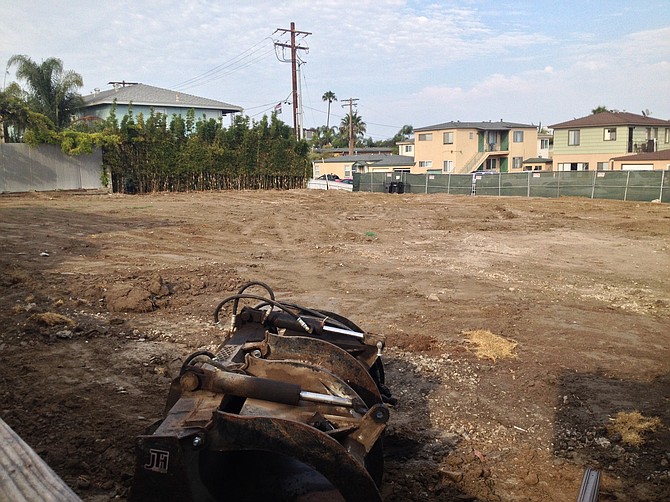
Since moving into the Roseville neighborhood in May, Toni Popoki Reed had not seen much happening in the vacant lot across the street. She knew of the housing project that broke ground there in 2016. She was aware it had stalled sometime this year but didn't know why.
She was surprised when, mid-September, she saw something other than the weeds getting taller on the corner of Garrison and Locust streets. At 6:45 a.m., she spotted workers on the lot.
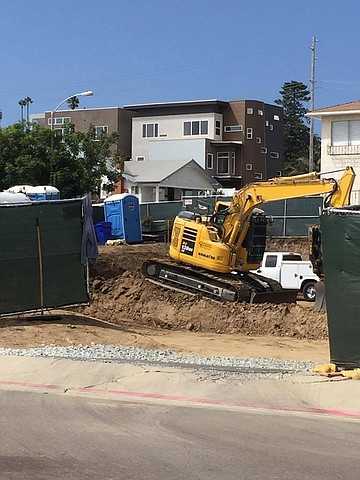
Reed spoke with the onsite project engineer. "He told me the goal was to be completely done in three months. He told me he didn't know why construction originally ended. I seriously doubt he didn't know, but he was being friendly. He said the units would be townhouses, bi-level — he explained that to mean one row would be higher than the other for the view."
Reed wasn't able to ascertain how many stories or the height from the project engineer.
One thing Reed didn't feel the need to ask about was the flooding she is sure will happen in the project's planned basement parking "We're at the bottom of a huge hill that Garrison meanders up. All rain will be in those garages."
The same architect who designed this project's underground parking also designed underground parking in Ocean Beach that drowned a Lamborghini in 2015. This same architect is in the midst of the controversial Kellogg Beach condo project that aims to put underground parking beneath on-the-beach condos.

The city opted not to answer any of my questions. They instead asked me to do a public act request.
City permitting describes the project as "2 new 4 unit [8 units] condo buildings with partial basement parking, balconies, roof decks & cover over driveway aisle." Previous permitting stated "4 story 4 unit condo buildings with partial basement parking." While the fourth story has been removed from current permitting — has it been removed from the plans?
The project engineer's mention of "townhouses" caught my attention; this seems to be what builders call the rentable units they apply to build. Once built, some then apply for a map waiver so they can sell the units instead. A map waiver subdivides the parcel(s) so each unit can be sold separately. This isn't needed when one owner owns all the units being rented out.
Map waivers can save developers time and money — and bypass public input.
As far as I can tell, Garrison/Locust's two parcels have yet to be subdivided. It's not clear that this developer plans to jump on the map-waiver bandwagon, but it's clear that Roseville bandwagon is getting crowded. The controversial condos on the corner of Emerson/Evergreen took that route.

There is a feeling of déjà vu as Garrison/Locust has some of the same hallmarks as the much protested project at Emerson/Evergreen.
Circa May 2016, the previous four single-story structures were demolished.
On July 1, 2016, a grading permit was issued. On July 7, a neighbor photographed piles of dirt brought onto the site. At the time, neighbors were on high alert having just protested the builder bringing in mounds of dirt to raise the grade at Emerson/Evergreen.
Then, in February 2017, what looked like the partial basement garages were filled with water; one looked like a dirty swimming pool.
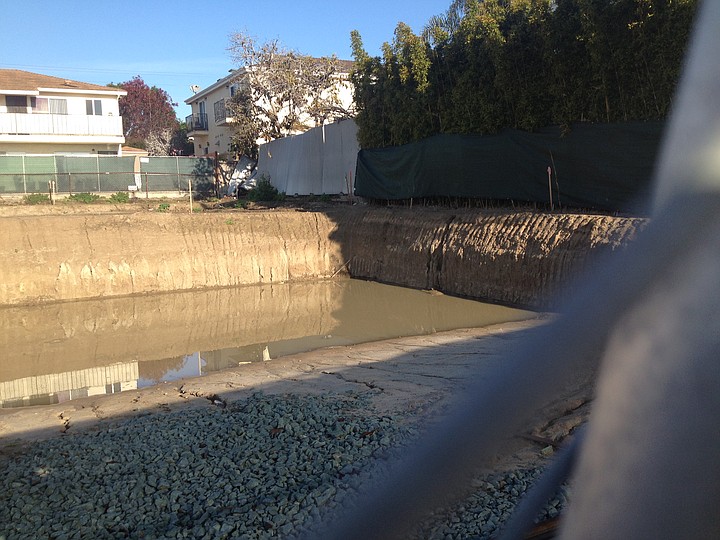
In March 2017, the city received a code-compliance complaint about all the water. A resident, Marian D'Angelo, said a neighbor complained because she was concerned about mosquitoes breeding in the standing water. She said the water was treated with mosquito killer. The case was closed on June 9, 2017.
Three days after the code-compliance case was closed, a project invoice totaling $187,617.42 was paid by the applicant.
Geoff Page, former chair of the local planning group, went downtown to look at the building plans. From what he could tell, it looked like the project may have stalled because of revised grading plans. (Two days after asking who exactly in development services made the decision to not answer questions, and a few hours after Page checked out the building plans downtown, the city offered to respond to questions. As of publication, that has yet to happen.)
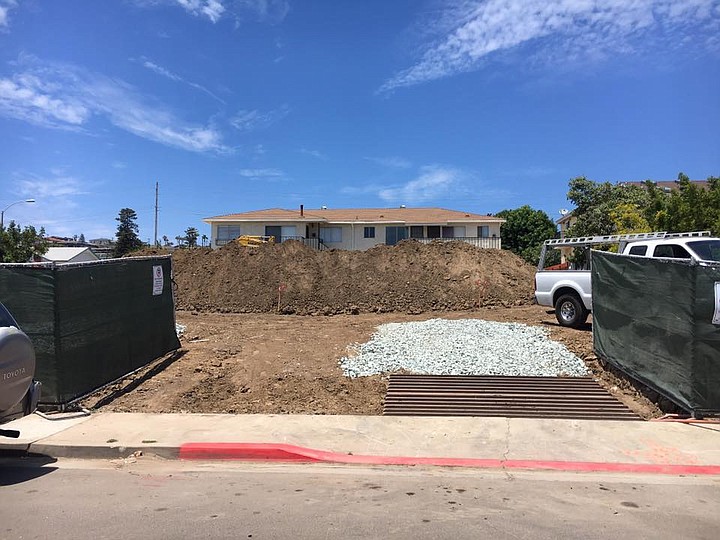
Page said the confusion about the number of stories is because the partial basement garage is being called the first floor with three stories above that. He said it looks like they are using raised planters that allow the builder to start measuring the height from the top of the planters.
Page said an anomaly exists in the plans that hint at something similar to what was tried at Emerson/Evergreen (where they brought in dirt to bury the above-ground garages to make them appear underground). "The grading-plan sheets show existing grading is below the basement of the northerly buildings and cutting through the basement of the southerly building. It looks like they are putting a retaining wall on the north side and trying to make the garage subterranean again. But another plan sheet shows existing grade right above the garages. There is a clear contradiction here. If they are doing the subterranean trick, we all need to speak up."
What about Reed's concerns about those garages flooding? A July 2016 agreement was issued between the city and the developer to "hold harmless for public storm water onto private property." Page explained this agreement ensures the city won't be liable for runoff down Locust Street that might end up flooding the garages.
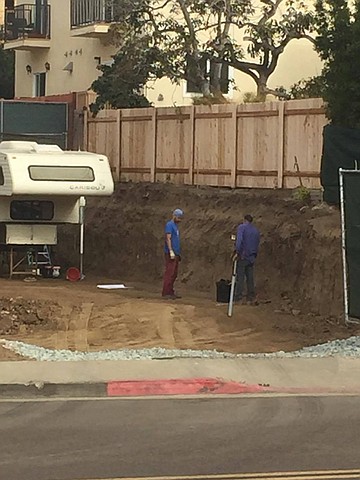
As far as height, Page said, "They show the buildings at 32 feet and 5-1/2 inches tall, but the question remains where they are measuring from. The sheet that shows this measurement is the one that shows existing grade above the garages."
Where the bi-level [tiered] height the project engineer mentioned to Reed comes into the height equation isn't clear. Neither is the roof deck. Page said he didn't notice a roof deck design in the plans.
A construction change was issued on January 30 to modify the elevations, change the driveway standard, relocate two walkways and a tree, and shorten the stairs. Page said, "The elevations look like they are raising the grade because the grade at garage floor level is only about six feet below the grade at the sidewalk."
Page said he is going to try to meet with the project manager to discuss the grade further.
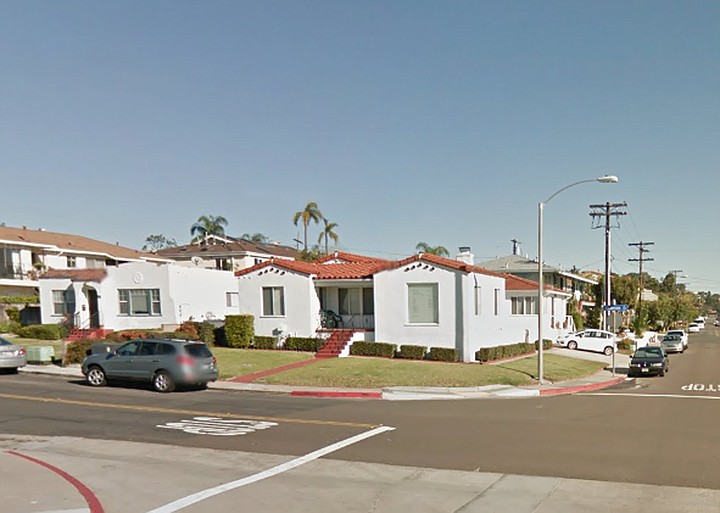
Don Sevrens from the planning group, speaking for himself and not the group, said that Roseville is changing project-by-project and the impact to the overall character of the neighborhood is going unchecked without public hearings.
"Development Services [department] has a responsibility to both the builder and the community. More than density, Point Loma needs gathering places, mini-landscaped corridors to each street or another." Sevrens wants to see something more like the public spaces in Little Italy. He said if more public input were required of projects, maybe a dialog could be had.
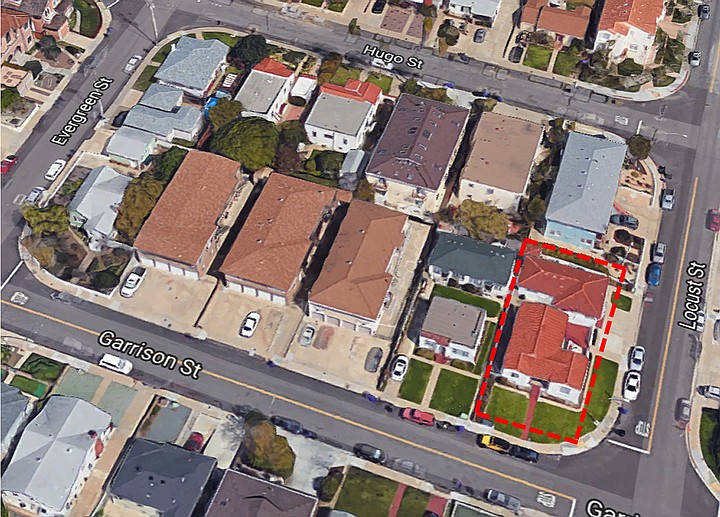
Sevrens said it's important for the community to organize and pick their battles carefully. "Opposing these projects one-by-one is like putting out a brush fire with a wet towel."
Some residents say they are concerned as more people inherit homes that they will sell them to developers. Some say they are tired of the barrage of letters from developers chomping at the bit to buy their homes. Some hope the new developments will raise their property values while some are certain it will lower them via the views being wiped out by these same developments.


Since moving into the Roseville neighborhood in May, Toni Popoki Reed had not seen much happening in the vacant lot across the street. She knew of the housing project that broke ground there in 2016. She was aware it had stalled sometime this year but didn't know why.
She was surprised when, mid-September, she saw something other than the weeds getting taller on the corner of Garrison and Locust streets. At 6:45 a.m., she spotted workers on the lot.

Reed spoke with the onsite project engineer. "He told me the goal was to be completely done in three months. He told me he didn't know why construction originally ended. I seriously doubt he didn't know, but he was being friendly. He said the units would be townhouses, bi-level — he explained that to mean one row would be higher than the other for the view."
Reed wasn't able to ascertain how many stories or the height from the project engineer.
One thing Reed didn't feel the need to ask about was the flooding she is sure will happen in the project's planned basement parking "We're at the bottom of a huge hill that Garrison meanders up. All rain will be in those garages."
The same architect who designed this project's underground parking also designed underground parking in Ocean Beach that drowned a Lamborghini in 2015. This same architect is in the midst of the controversial Kellogg Beach condo project that aims to put underground parking beneath on-the-beach condos.

The city opted not to answer any of my questions. They instead asked me to do a public act request.
City permitting describes the project as "2 new 4 unit [8 units] condo buildings with partial basement parking, balconies, roof decks & cover over driveway aisle." Previous permitting stated "4 story 4 unit condo buildings with partial basement parking." While the fourth story has been removed from current permitting — has it been removed from the plans?
The project engineer's mention of "townhouses" caught my attention; this seems to be what builders call the rentable units they apply to build. Once built, some then apply for a map waiver so they can sell the units instead. A map waiver subdivides the parcel(s) so each unit can be sold separately. This isn't needed when one owner owns all the units being rented out.
Map waivers can save developers time and money — and bypass public input.
As far as I can tell, Garrison/Locust's two parcels have yet to be subdivided. It's not clear that this developer plans to jump on the map-waiver bandwagon, but it's clear that Roseville bandwagon is getting crowded. The controversial condos on the corner of Emerson/Evergreen took that route.

There is a feeling of déjà vu as Garrison/Locust has some of the same hallmarks as the much protested project at Emerson/Evergreen.
Circa May 2016, the previous four single-story structures were demolished.
On July 1, 2016, a grading permit was issued. On July 7, a neighbor photographed piles of dirt brought onto the site. At the time, neighbors were on high alert having just protested the builder bringing in mounds of dirt to raise the grade at Emerson/Evergreen.
Then, in February 2017, what looked like the partial basement garages were filled with water; one looked like a dirty swimming pool.

In March 2017, the city received a code-compliance complaint about all the water. A resident, Marian D'Angelo, said a neighbor complained because she was concerned about mosquitoes breeding in the standing water. She said the water was treated with mosquito killer. The case was closed on June 9, 2017.
Three days after the code-compliance case was closed, a project invoice totaling $187,617.42 was paid by the applicant.
Geoff Page, former chair of the local planning group, went downtown to look at the building plans. From what he could tell, it looked like the project may have stalled because of revised grading plans. (Two days after asking who exactly in development services made the decision to not answer questions, and a few hours after Page checked out the building plans downtown, the city offered to respond to questions. As of publication, that has yet to happen.)

Page said the confusion about the number of stories is because the partial basement garage is being called the first floor with three stories above that. He said it looks like they are using raised planters that allow the builder to start measuring the height from the top of the planters.
Page said an anomaly exists in the plans that hint at something similar to what was tried at Emerson/Evergreen (where they brought in dirt to bury the above-ground garages to make them appear underground). "The grading-plan sheets show existing grading is below the basement of the northerly buildings and cutting through the basement of the southerly building. It looks like they are putting a retaining wall on the north side and trying to make the garage subterranean again. But another plan sheet shows existing grade right above the garages. There is a clear contradiction here. If they are doing the subterranean trick, we all need to speak up."
What about Reed's concerns about those garages flooding? A July 2016 agreement was issued between the city and the developer to "hold harmless for public storm water onto private property." Page explained this agreement ensures the city won't be liable for runoff down Locust Street that might end up flooding the garages.

As far as height, Page said, "They show the buildings at 32 feet and 5-1/2 inches tall, but the question remains where they are measuring from. The sheet that shows this measurement is the one that shows existing grade above the garages."
Where the bi-level [tiered] height the project engineer mentioned to Reed comes into the height equation isn't clear. Neither is the roof deck. Page said he didn't notice a roof deck design in the plans.
A construction change was issued on January 30 to modify the elevations, change the driveway standard, relocate two walkways and a tree, and shorten the stairs. Page said, "The elevations look like they are raising the grade because the grade at garage floor level is only about six feet below the grade at the sidewalk."
Page said he is going to try to meet with the project manager to discuss the grade further.

Don Sevrens from the planning group, speaking for himself and not the group, said that Roseville is changing project-by-project and the impact to the overall character of the neighborhood is going unchecked without public hearings.
"Development Services [department] has a responsibility to both the builder and the community. More than density, Point Loma needs gathering places, mini-landscaped corridors to each street or another." Sevrens wants to see something more like the public spaces in Little Italy. He said if more public input were required of projects, maybe a dialog could be had.

Sevrens said it's important for the community to organize and pick their battles carefully. "Opposing these projects one-by-one is like putting out a brush fire with a wet towel."
Some residents say they are concerned as more people inherit homes that they will sell them to developers. Some say they are tired of the barrage of letters from developers chomping at the bit to buy their homes. Some hope the new developments will raise their property values while some are certain it will lower them via the views being wiped out by these same developments.
Comments